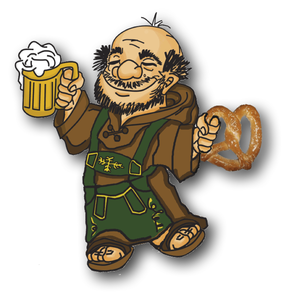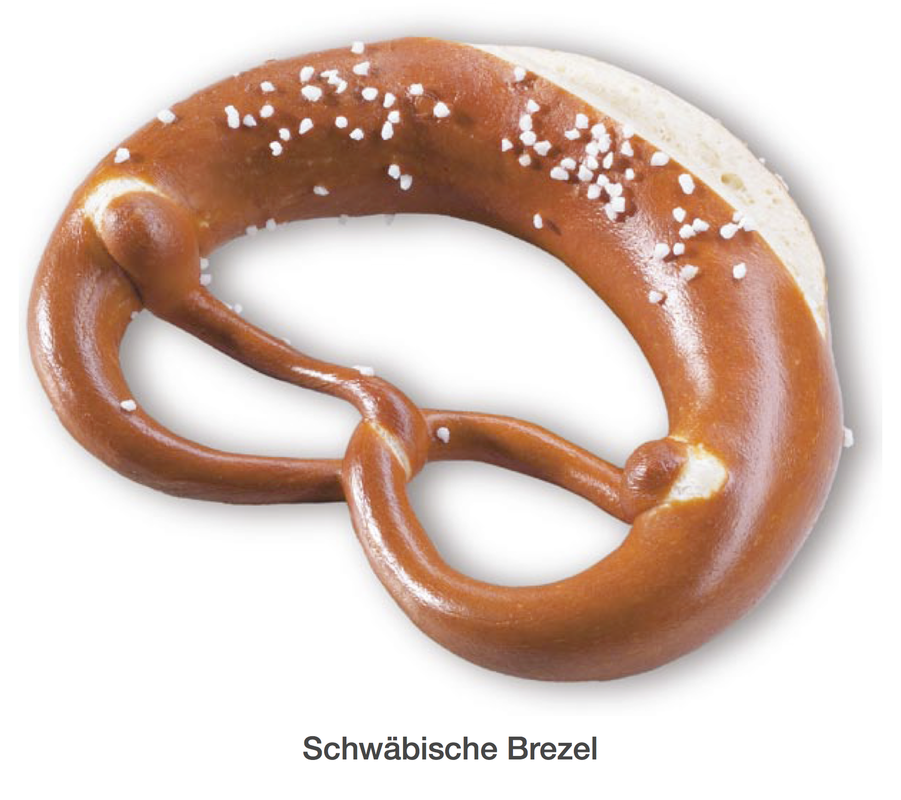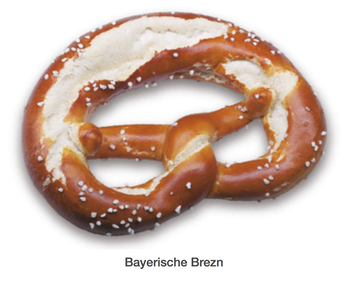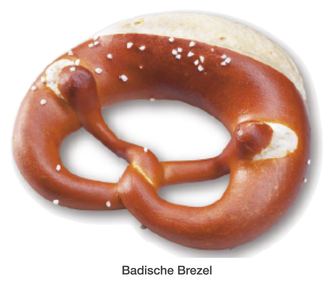German Pretzels
|
The origin of the pretzel is uncertain. One of the most popular beliefs is that pretzels were developed in the 7th century by Christian monks as a reward for children who learned their Catechism. The shape represents a monk with his arms folded in prayer and the three holes in the pretzel were meant to symbolize the Holy Trinity; The Father, The Son and The Holy Ghost.
|
While the origin of the pretzel may be uncertain, the etymology is clear. The word pretzel emerged from the Latin word "bracchium", meaning arm, which in Olde High German was "Precita" or "Brezin". This ultimately led to the proper German name, "Brezel" (singular) or “Brezeln” (plural). Depending on the dialect, pretzels are called Brezel (High German), Brezn (in Bavaria and Austria), Bretzel (in Switzerland) or one of many similar names, based on the region.
The most popular pretzel is the "Laugenbrezel" (lye pretzel), called so because, before they are baked, pretzels are bathed in a solution of lye, also known as Sodium Hydroxide (NaOH) or caustic soda. The Laugenbrezel or “lye pretzel” was, like many of man’s discoveries, accidental. Lye has been used for thousands of years as a cleanser and disinfectant, either as a solution of lye mixed with water or added to animal fat to make soap. It’s believed that a baker in Munich, who had just prepared a batch of pretzels for baking, accidentally dipped them into a solution of lye that was being used to clean the bakery, |
Every region, if not every bakery, has their own special formula. However, the three main formulas come from the three regions of southern Germany, which are Bavaria, Swabia and Baden.
My favorite pretzels are the Schwäbische Brezel and the Bayerische Brezn. The differences between the two formulas are significant and are easily detected in shape, texture and flavor. The Schwäbische Brezel contains up to 10% fat (butter and lard), while the Bayerische Brezn contains just 3% fat (lard only). The Schwäbische Brezel has thinner arms and are typically attached directly opposed from one another, while the Bayerische Brezn arms are only slightly thinner than the top of the pretzel and are angled slightly upwards. The Schwäbische Brezel is slashed across the top while the Bayerische Brezn tears open naturally due to a smaller amount of fat in the dough. The Schwäbische Brezel is very soft. The Bayerische Brezn is lighter due to its lower hydration rate. Bavarians especially enjoy their pretzels in the late morning with Weißwürst, sweet mustard and a Beer while the Swabian's prefer to slice their pretzels through the middle, similar to a bagel, and spread butter on them. |
|
The earliest recorded evidence of the pretzel appears in the beginning of the 12th century, on the crest of the German bakers’ guild, in the the year 1111 AD. However, bakers most certainly hung wood carved pretzels in front of their bakeries as a sign to passer-buyers that the shop was a bakery, long before this.
|
instead of a solution of sugar water, which was the usual process. Not wanting to throw out the batch, he went ahead and baked the pretzels. The result was a batch of beautiful pretzels, each with a shiny coat, a wonderful aroma and a unique, and delicious taste. The rest is history. There are countless formulas for pretzels.
|
The Schwäbische formula comes from the tiny village of Heiligkreuztal (Holy Cross Valley) located in Oberschwaben, a region that lies in the high altitude farming hills of south central Germany, just north of Bodensee (Lake Constance), where Austria, Switzerland and Germany meet. The sleepy little village rests within 10 miles of the town of Zwiefalten, where the Zwiefalten Abbey stands, one of Germany’s most beautiful baroque churches. If you are ever anywhere near Zwiefalten, you must take a tour of the church.
|



